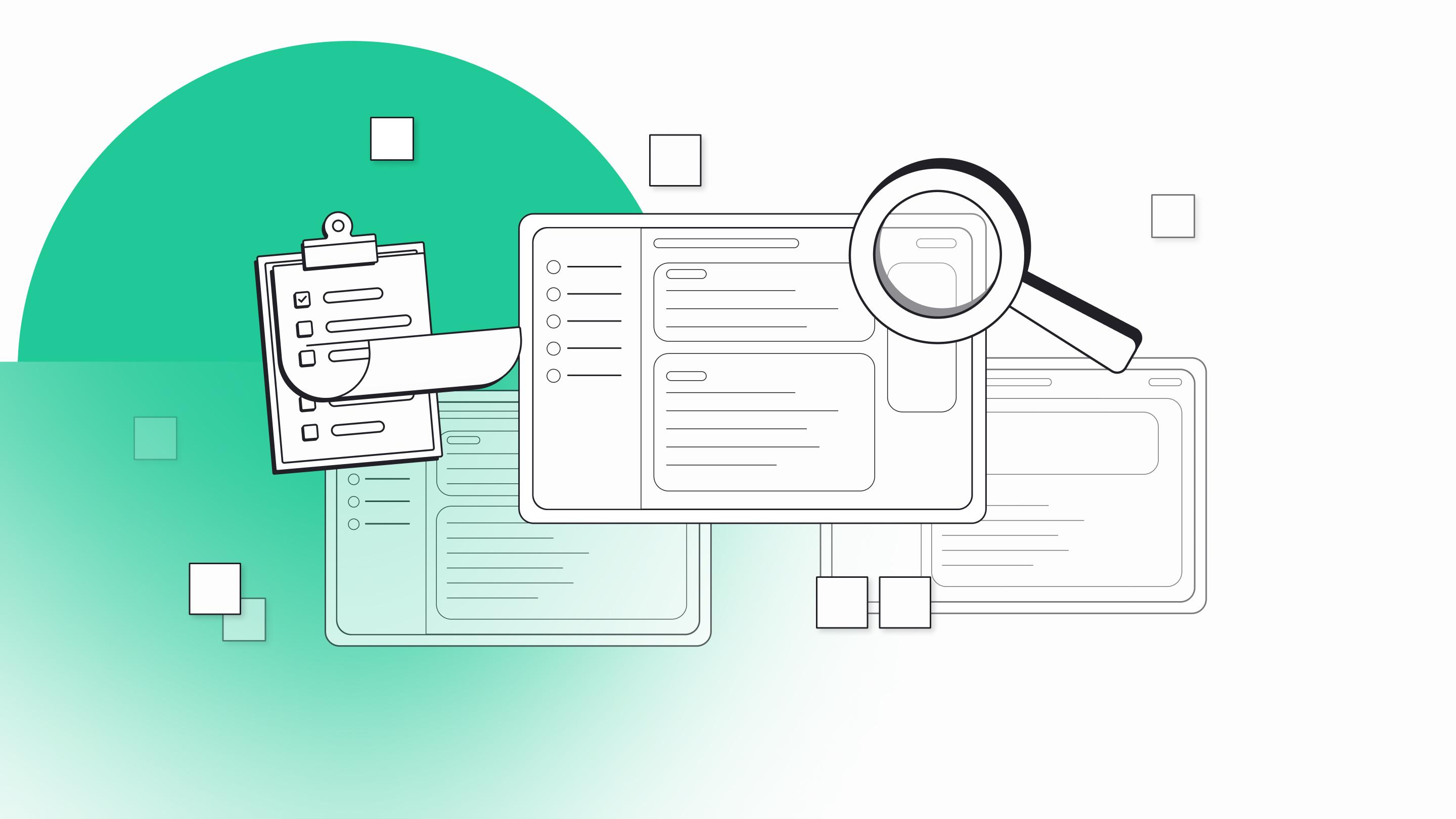


How accurate is the first software cost estimate?
Have you noticed how fast the world is going? We dream about a quiet and peaceful life when we always choose the quickest way. Everything has its deadline and also we want immediate results, we’re used to it.
The same is with software development – even before clients sign off the deal, they want to know when it’ll be done and how much it’ll cost. And it’s understandable. Thanks to the first software cost estimate, they know how much they’ll have to spend and prepare themselves to release the digital product.
But, custom software development almost naturally centres around the idea of constantly evolving and improving the process. It’s iterative. A conclusion? There’s no way that we could make a perfect first software cost estimate that’s detailed and reliable. It’d be too perfect.
Let’s take a look at 3 such cases and see if we can prevent them. Also, we’re going to talk about how accurate are the first software assessments and give you a few tips to avoid this change from the first estimation or make it a bit smoother.
The process
Building a digital product is a challenge – it takes a lot of research, testing and pivoting. These are just a few of the software development phases that can influence the app’s price since the first software cost estimate. And there’s no way around it if you want your product to succeed on the market. But more about it later.


Have a project in mind?
Let’s meet - book a free consultation and we’ll get back to you within 24 hrs.
Why software cost estimations are so difficult?
As it’s the case with every project, software development also carries some risks that might ultimately impact delivery time. It ranges from internal threats such as team member dropping out of the project to external ones, just like changes in the external provider’s policy or the business environment. Because of the last factor, you’d have to change the product’s form so it’d perform well on the market.
Get to know more about project risk management in software development from our product owner. This article will show you different threats to the process and how we handle them.
What if
When working with a software house, the team knows that many things can go wrong. Some of them we’ve already described in the previous articles. From What affects the cost of software development? you’ll get to know the software cost factors and a bit about our process. Here, we take under the loop 3 possible scenarios.
Case 1: Estimation created before the workshop and design phase
Workshops
Product discovery workshops allow you to analyze the idea with an experienced team consisting of a product owner, designer and developers, which, in turn, helps in figuring out the core of the concept or even changing it for a better one.
Without this step, some crucial issues may be overlooked, which may cause problems in the future. But then, it’ll be far more severe and thus pricey. All it takes is a ready design, and you already have an additional cost. Plus, you’d have to add necessary adjustments, which could give far worse result than creating it from scratch – not to mention the cost of a brand new design.
That’s why we carry out a product discovery workshop at the beginning of most of our projects – sometimes it’s a 2-hour conversation, other times it takes 2 days or even a week to figure out. Regardless of the workshop size, it’ll help the team determine a business goal and scope of the project, focus on the core functionalities, perform detailed research, and create a potential customer’s persona. Hence we give more precised software cost estimate.
If you want to know more about this stage, read what’s a project workshop and what are its benefits. Thanks to this, you’ll know its different steps and what you’ll get after a workshop.
Design stage
The same goes with the design phase – there’s no way you’d skip it if you don’t have it figured out yet. So, what do you get from designers? First of all, wireframes show the interface elements, features and overall layout of the application. Then the prototype – excellent for the first tests. Next, we have screens or moodboards, thanks to which you can decide how your product will look.
The goal of the design phase is an exceptional user experience. That encompasses functionalities, the flow of the application, testing and many more.
Now imagine there’s no design phase – how would you fulfil users’ needs? Omitting this stage and moving right to development may backfire later. Without usability tests and building the app step by step, you have no idea what works for your target audience. In other words, you have no idea if the product succeeds. This results in alterations which affect the first software cost estimate.
Learn more about the process by reading What does a client get from designers? It’ll give you a lot more details about the impact this stage has on your digital product. Plus, it has an infographic inside! You can save it and later ask your software vendor about its elements.
Teamwork
Also, it’s worth mentioning that we tend to engage all the team members in the initial stages of the process. Thanks to this, everyone has an equal understanding of what’s going on in the project and can add something significant from their expertise to make the product more valuable.
Moreover, all the solutions form a cohesive whole – designers and developers collaborate so that everything is functional and beautifully designed. Plus, the performance is improved since there’s less room for misunderstandings and errors. Lastly, software cost estimate is more precise if the entire team is involved.
Case 2: MVP tests with the early adopters may result in scope change
You may think that you know the end-users, their needs and problems. However, after the tests with an MVP, it turns out that there are more issues to consider. This, in turn, results in scope change. And you should be ready for that as often your assumptions may be based on the wrong beliefs. In that case, you have to pivot, alternate them and carry out the tests again.
It may sound complicated and unnecessary. But believe me, it’s going to pay off in the long run. You’ll have a user-friendly and secured app that’s desired by its target audience. That’s already a massive competitive advantage on the market.
Moreover, with an MVP, this price alternation won’t be too dramatic. Imagine if we had a final product ready, did the tests and then, something like this happened? The costs would be much higher. It’s like doing a whole new app all over again!
That’s why we divide the products into smaller parts so that there’s no need for you to pay a whole figure in case of an alteration. In software development pricing models you need to know, our new business manager writes more about Gorrion’s approach.
Case 3: A scope may decrease due to removing unnecessary features from the backlog
It may happen that during the development stage, we may add or eliminate the functionalities, which can change the software price. This can happen, among other things, as a result of tests – may be the application is packed with too many features, or something is missing.
There can also be a situation where the market changes and some functionalities no longer bring value to the digital product. In this case, the right course of action would be to remove unnecessary features from the backlog, which changes the price (but here for your benefit).
How to prevent these errors in software cost estimation?
Believe it or not, but we do everything to prevent missed deadlines or extra costs for the project. We do. But sometimes, it’s inevitable. As you could read in the previous section, some changes result from users, others from the ever-changing market.
However, there may be some actions that you and your team can take to mitigate the extent of the changes. Let’s see them.
- Scope the development cycles
It’s best to divide the process into smaller periods, enlist the tasks, prioritize them, and estimate a part of them. Doing it step by step will prevent your team from making dramatic alterations in the assessment. Instead of paying a whole amount again, you’ll pay, for example, a 3-month-long worth of work. Sounds better, right? - Manage the backlog
In other words, prioritize. When planning the work, sit down with the team and figure out which features are a base for you and which are additional or optional. You may conclude that some of them shouldn’t be there in the first place.
At this stage, analyses such as priority matrix or SWOT analysis are also beneficial. Thanks to them, you gain a broader perspective on the product, ultimately facilitating managing the backlog. - Work closely with the team
Another good way is to get to know the digital product idea – engage with the whole team from the very beginning. Thus, they’ll better understand the project vision and focus on the end-users, at the same time facilitating coming up with valuable solutions to the problem.
At Gorrion, we love to share experience between teams. In this way, we’re constantly learning and improving our software development process. If something happens in one case, we can prevent or mitigate it in the other.
Close collaboration with the client is equally important. By being involved in the process, you’re aware of everything that’s going on in software development. You’re not only our client, but you also become a business partner with whom we can openly exchange ideas, discuss issues and collaborate during the process.
Key takeaways
- Sometimes you need to revisit and alternate your software cost estimation. That’s why it’s best to start from an MVP.
- Breaking down the process into smaller parts helps to focus on the business’s core and differentiate given functionalities.
- In many cases, fast doesn’t mean good – especially when it comes to software cost estimating. To get a better, more detailed assessment, you’ll have to wait until, together with a team, you determine the core of the digital product and test it. This includes core functionalities, persona, opportunities, risks and comprehensive analysis.
Editor’s note: We’ve originally published this post in May 2021 and updated it for comprehensiveness.


Have a project in mind?
Let’s meet - book a free consultation and we’ll get back to you within 24 hrs.
Mariusz, on our blog, covers business issues like software development costs, ways of choosing the right software agency, and more.


